Term archive
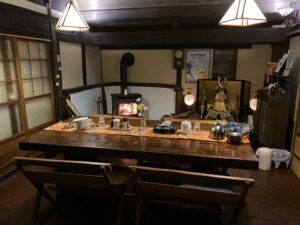
投稿タイプ:activities
Furuma-ya Cooking Class
Furuma-ya is a traditional thatched-roof home built in the Edo period (1603-1868), and has since been remade into a farmhouse inn.
There's a feeling of homemade warmth in the house, on which the owner worked hard to rennovate.
Perfect for those who want to step away from the hustle and bustle of the city for a more relaxing experience, here you can vegetarian food with local country vegetables and other ingredients, together with the charming owner of this popular inn.
Vegan options are also available, and Furuma-ya will also try to accomodate Halal requests.
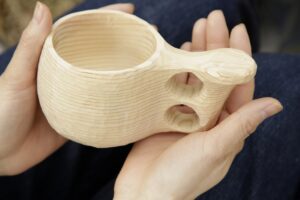
投稿タイプ:activities
A Kyoto Field Trip For Grown-Ups! Make a Kyo-Kuksa Mug with Tanshu Wood & Forestry Tour
Enter the forests of Kyoto, and learn about the timber industry with a first-hand tour, from the felling of trees to their transformation into lumber at the sawmill.
Learn about Woodland Kyoto's unique forestry, enjoy lunch in the forest, and take in the relaxing surroundings.
"Tanshu timber" is the nickname given to cedar and cypress grown along the Yura River in the Chutan area. It s a high quality timber that has been traded at high prices since ages past.
The kuksa (guksi) mugs made here are a traditional handicraft of the Sami people indigenous to Finland, and it is said that the person who is gifted one of these mugs is sure to find happiness.
During this activity, participants will make their own Kyo-Kuksa mugs by filing down a mug that's about 80% finished.
By filing down the remaining 20%, you can make a mug that fits the shape of your own hand.
Experience for yourself the process by which a living tree in the forest is transformed into an object we use in our daily lives.
1. Meet up
2. Go to forest *It is preferable that you come dressed in clothes that you don't mind getting dirty, and bring work gloves.
3. See the felling of trees
4. Eat lunch on a tree stump *Please bring your own lunch.
5. Sawmill tour
6. Kuksa mug-making *You will be able to take your own kuksa mug home with you on the day of the activity.
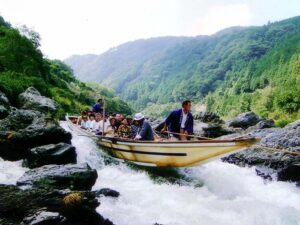
投稿タイプ:activities
Hozu-gawa River Boat Ride
Kyoto's premiere spot for scenic beauty, the Hozugawa River flows 16 kilometers between the mountains leading to Arashiyama. Once an essential waterway for transporting lumber, rice, and other goods to the capital, the river now offers visitors a chance to experience the Hozu-gawa River Boat Ride, a captivating two-hour journey through nature. Guided by 3-5 skilled boatmen, this scenic ride takes you through a stunning variety of landscapes, each offering its own charm throughout the year.
In spring, the riverbanks are adorned with delicate cherry blossoms, filling the air with fragrance and beauty. Summer brings lush greenery, with dense foliage creating a peaceful, cool canopy over the water. As autumn arrives, the landscape transforms into a vibrant palette of colored leaves, painting the mountainsides with red, orange, and gold hues. Winter presents a tranquil beauty, with the river flowing through a snow-dusted gorge, adding a serene touch to the surroundings.
Along the way, massive boulders and dramatic rock formations rise from the river, creating striking contrasts against the lush mountain backdrop. The river’s ever-changing current, with its deep pools and fast-moving rapids, offers both excitement and a sense of adventure. The boatmen expertly navigate these varying waters, ensuring an exhilarating experience as they guide you through the natural wonders of the region. Whether you love nature or seek thrills, this river journey gives you an unforgettable view of Japan’s amazing scenery.
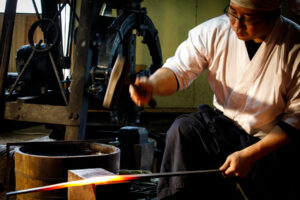
投稿タイプ:activities
Masahiro Sword Smithing Experience
Learn about Japanese swords/katana from an active Japanese swordsmith, and use tamahagane, the same type of steel used to make Japanese swords, to make a hilt-less, small, sword-shaped blade (tousugata kogatana).
In this activity, you can step into the world of katana, and learn all about the culture of Japanese swords in a single day.
Stretch the steel with your own hands to create a 15 cm blade.
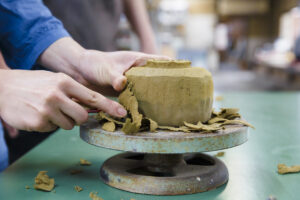
投稿タイプ:activities
Raku-ware Pottery Experience
At Shoraku Kiln, pottery-throwing activities are carried out on a reservation-only system. Experience making raku-ware pottery tea bowls in the same way as the raku-ware craftsmen.
After shaping the dough by hand, it is dried for about one hour, and then cut into the desired shape and weight to finish your very own piece.
Only raku-ware tea bowls can be made during this activity.
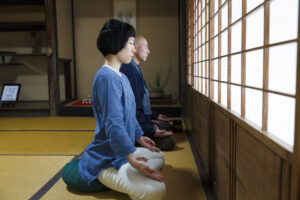
投稿タイプ:activities
Zen Meditation
There is a small zen temple at the end of a road that stretches through the rice fields.
In this entirely private environment, you can speak with a Buddhist monk, and after bringing your body into balance with some stretching, you can experience seated zen meditation.
Come have your own personal meditation experience.
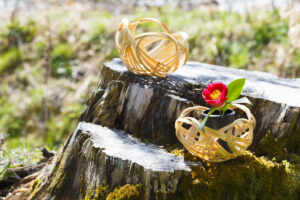
投稿タイプ:activities
Bamboo Basket Weaving: Experience the skills of a certified Kyoto craftsman!
Take this chance to re-experience the wonder and high quality of bamboo in this workshop that has fashioned bamboo fences for 60 years.
The work here is easy to perform, regardless of gender. You can use you basket for a variety of uses, be it a flower basket or container for small items!
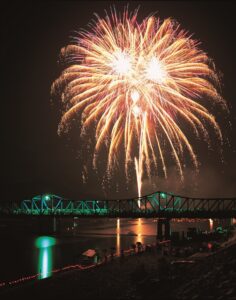
投稿タイプ:events
Nantan City Fireworks Festival
This fireworks festival began as an event to honor those fallen in war, and has been a local tradition for many years. Approximately 5,000 fireworks, including trick and "star mine" fireworks will be launched at the venue along the river.
During the finale, in which the bursts of "star mine" fireworks are launched one after the other, the sky is filled with fireworks, filling it with a brightness like daylight.
Lanterns will float on the surface of the river, and visitors will truly be able to enjoy a fantastically atmospheric sight.
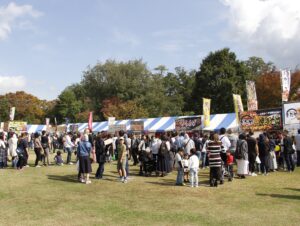
投稿タイプ:events
Kyotamba Food Festival
The town of Kyotamba is known for producing many branded food such as Tamba brand black beans, Tamba chesnuts, and Tamba Dainagon azuki beans.
Visitors to the Kyotamba Food Festival can enjoy all of these delights, here where a great many of these local foods are presented together.
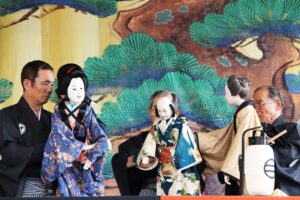
投稿タイプ:events
Regular Performances of Traditional Performing Arts
Traditional Japanese performing arts are regularly performed in the hall at the "Wa" Michi-no-Eki rest stop.
Enjoy performances of "ningyo jyoruri" (puppet theater), "wachi daiko" drumming, and "obata mansai" theatrical performances, carefully passed down by the local people here.
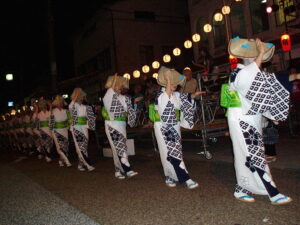
投稿タイプ:events
Fukuchiyama Dokkoise Festival
During the Dokkoise Festival, there is a traditional dance procession, in which groups from government offices, companies, local residents' associations, and other groups, as well as individuals of both genders and all ages can freely participate. There is also a Dokkoise Children's Festival.
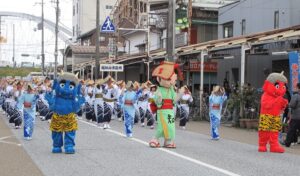
投稿タイプ:events
Fukuchiyama Castle Festival
This traditional festival heralds springtime in Fukuchiyama.
The castle was originally constructed by samurai Akechi Mitsuhide, and this festival commemorates the re-construction of the castle tower in 1986, renewing successive festivities such as the "Commerce Tourism Festival," the "Science and Sunlight Exposition," and the "Fukuchiyama Demon Festival" as the Fukuchiyama Castle Festival, which continues to this day.
Places known for their association with Akechi Mitsuhide (Fukuchiyama Castle and Goryo Shrine) are the venues for this event, at which visitors can enjoy local Fukuchiyama food, stage shows, parades, and more.
